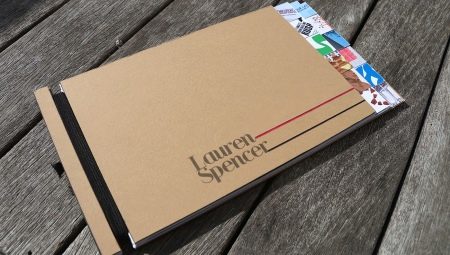Every designer looking for a job knows the price of a good portfolio. It not only shows the achievements of the author, but also sets him apart from other artists. Few of the beginning masters know how to properly draw up their portfolio, how to fill it so that the employer is interested in you.
You can start your journey in the world of design in different ways. For example, go to work as an intern in a design studio, or you can build one yourself. However, perhaps the easiest and fastest way to earn money can rightly be called freelance. It allows you to search and carry out a variety of projects and teaches you how to behave in a serious competition.
However, so that among the dozens of competitors the customer chooses you as the performer, it is necessary to demonstrate his abilities to him. This is where the question of portfolio comes up.
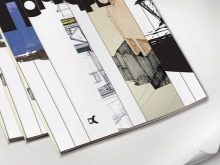


Basic compilation rules
The portfolio of any self-respecting designer should follow a series of simple rules.
When adding work to your portfolio, attach to it also the text of the assignment that the customer gave you, or briefly retell his problem that you solved in this work. Beauty is good, but practicality is far more important.
Do not put every project in the portfoliothat you were working on. The employer will rate you by the worst of your jobs. However, make sure that the portfolio starts and ends with your best works. This will leave a good impression on you about the customer.
Introduce yourself at the customer site and carefully review your work. Would you like to work with such a person? Does it look neat enough, doesn't the eye cling to any unnecessary detail?
Be sure to number the pages. Even if you do not plan to print your portfolio. Firstly, this makes it visually more aesthetically pleasing, and secondly, after viewing all the work it will be easier for the customer to return to those that he remembers.
If you work in several styles and want to show them to your employer, make sure that there is a smooth transition between them. Group work by style. If they are made in a clear stylistic framework, then you can use subheadings such as “work in style 1”, where “1” is the name of the style.
As a designer, you must be creative in everything, including in the preparation of your portfolio. They are expecting something new from you, your own highlight, and not a set of works compiled according to the template. Hundreds of thousands of standard portfolios are reviewed every day by HR managers and customers around the world. Make your stand out among the gray mass.
Do not keep your studies in the portfolio if you have already completed studies. These works were created by you only in order to tell the customer "That's what I have already learned." Graduation means that you are already a fairly competent specialist to create your own unique projects.

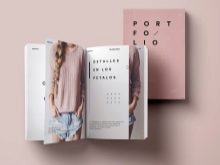

Structure
A well-structured portfolio looks noticeably better and is rated higher than the one in which the designer neglected appearance. It should consist of four important parts:
title page;
page "about the author";
main part;
conclusion.
The cover page is your business card. It should not be too bright, screaming or out of the general style. On the title page you can place one of your works or arrange it in a minimalist style.
The main thing that should be on it is your name, surname and specialty. You can also specify the year (s) when the portfolio was compiled.



Next is the author’s page. Here you can insert your photo, duplicate the full name, date of birth and a few words about yourself. If you are under 25 years old, it is better not to indicate the date of birth. Many employers are in no hurry to hire young professionals. Here you can also specify contact information: email, phone number, links to social networks.
Main part. Its creation and design takes most of the time. It includes all the work that you have contributed to your portfolio. It can be divided into styles, designs, or even colors. The main thing here is not to mix all the work together and give them enough space. You can put several small sketches on one page or devote a whole spread to one large project.
In the final part it is customary to insert reviews of satisfied customers, thanks, as well as duplicate their contacts. Do not forget about the design of the back cover. It should be a complement or extension of the front side. Such a structure is suitable for anyone, even a novice illustrator, advertising and printing designer, motion designer and even layout designer.
Printing design skills will be very useful for you in portfolio design, even if it is not at all related to printing.

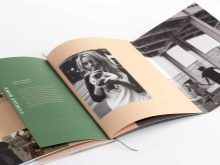
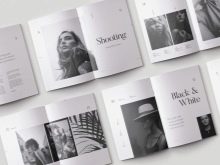
Format options
There are several options for portfolio formats. Do not dwell only on one of them. In different cases, you may need different options.
This format is universal for almost any need. Initially, it is better to make up the pages in Photoshop, and only then convert to PDF. Subsequently, such a portfolio can be easily printed in any printing house, sent by mail or even brought with you on a USB flash drive. For an example, you can take any art book or portfolio of another designer. Try to fit everything into a file size of 10-15 pages. It may not be easy for the employer to perceive a large amount of information.
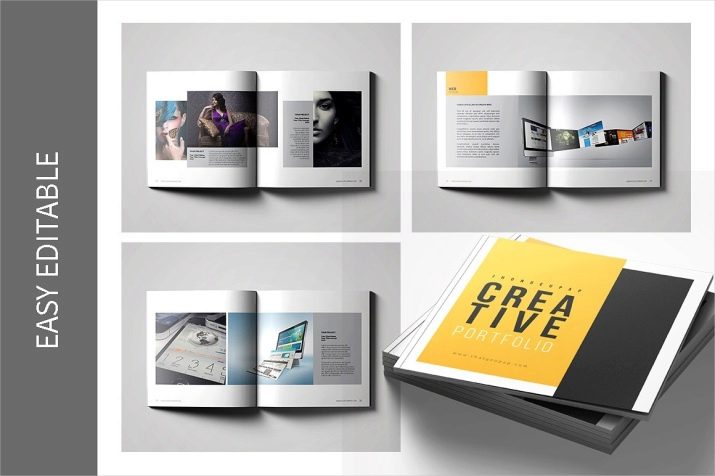
Presentation
Now a portfolio in presentation format is not often drawn up, but it also has its advantages. For example, the ability to add sound to your work.
However, this feature should be used very carefully, because it is perceived by employers positively by no means always.
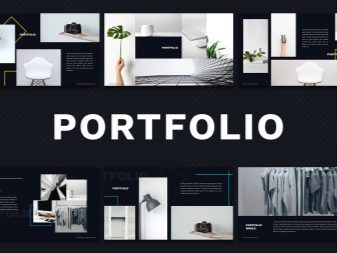
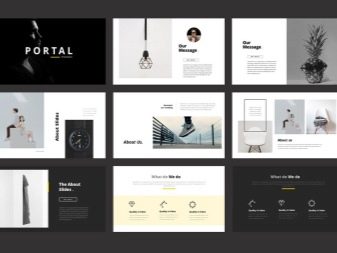
Personal site
Perhaps the best option for working with online customers. You can create a website even without resorting to an experienced typesetter using ready-made layouts or use a PDF portfolio as their site. The same rule applies here as in presentations - do not overload the employer with information. Examples of good sites can often be found at professional artists on freelance exchanges.
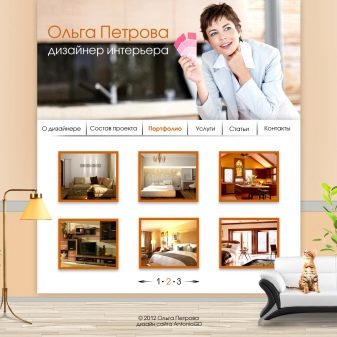
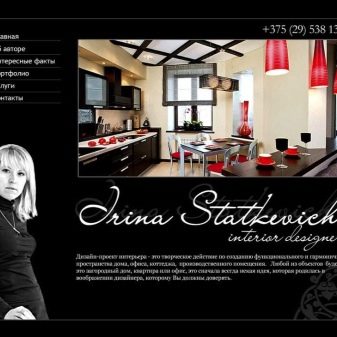
How to design beautifully?
Experienced designers are happy to give beginners plenty of design tips. But everyone also reminds that there is no magic button “make beautiful”, and you still have to choose the design to your own artistic taste. Before you start compiling your portfolio, look at how professionals do it. Mark or even write down for yourself what you are attracted to.
Do not forget the rule "one good job is better than a few bad ones."
Quality should come first, and only then quantity. It is not necessary to publish all your work, so you just overload the portfolio and erode the value of really worthwhile projects. Works done with the soul look best. Be sure to include them in your presentation.
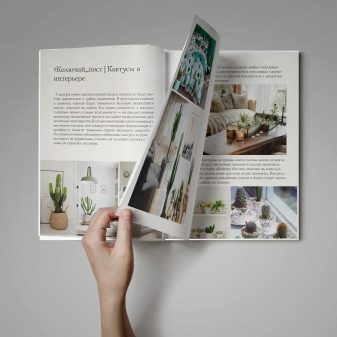
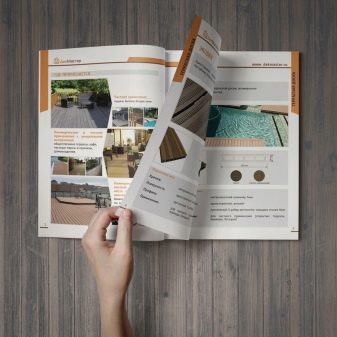
It’s better to remove some boring and dull projects from it that you were not interested in working on, but add one that you would like to continue with.
Tell a story in your portfolio. Let it be in the format of small signatures for works with a story about how you helped and how you changed the design for your customer. And at the end of the presentation you can collect customer reviews and company logos with which you have already collaborated. This will link all the work into a single system.
Do not complicate portfolio design. If you create it from scratch, then you should think in advance how everything will look, what the background, cover, font will be. Although the portfolio should look unusual, you should avoid clumsy details and too bright backgrounds.
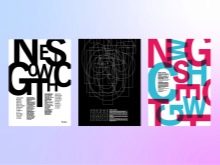


Recommendations
Before starting work on a portfolio, determine what purpose it will pursue. Will it be attracting customers, demonstrating skills or self-presentation to find work in a large studio. Customize it so that it is fully consistent with these goals. Exclude from it and add elements. A universal portfolio does not exist.
Feel free to show even unfinished tasksthat you had to work with. You can briefly describe what you would modify in them. But do not go into self-criticism. An author who does not value his work is unlikely to be appreciated by the employer. Show yourself as a professional.
If you haven’t had clients yet, upgrade the design of existing things or just think of a client. No one at the interview will look for this company or customer and check whether you really did the work for him. Do not do this with reviews. It will also be useful for a novice designer to take part in various competitions.
You may not take prizes, but you will get excellent experience and perhaps create work that can be placed in a portfolio.

Reasonably do charity work. For example, create a logo for a local literary club, and in return they will leave you a positive review. Or ask your clients to order your work not directly, but through a freelance exchange. In the portfolio, you can indicate that you took the order on a specific exchange.Of course, you will have to pay a small commission, but this will help to quickly increase your rating and other customers will treat you with great respect.
Do not use free website builders as hosting. They have a lot of advertising, which is unlikely to affect the perception of your portfolio by the customer. It’s better to pay a little for using a name domain and place anything there, even banners with ads, if it fits into the style.

Instead of simply demonstrating the work, add to it a few sketches that you did in the process of working on the project. This will enliven his presentation and give the customer a better understanding of how you structure your workflow. But do not turn it all into a journal with notes. No need to write too much. Excess text will take away the attention of truly important details and take up too much space on the pages. Do not add more than one small paragraph, approximately 4-6 lines.
Pay enough attention to detail. For example, if you want to work with the design of logos, often show them on the pages of your portfolio, make a logo for yourself and also place it. Or you can make your presentation in the style of the company you want to collaborate with. The main thing is not to copy her ideas and style, but bring something of your own into it. Only you can control the customer’s attention, make it look where you need it and when you need it. Use this opportunity wisely and all roads will be open before you.
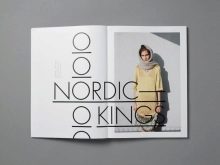

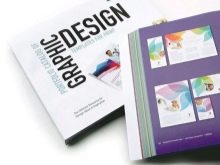
For more information on how to compose a designer’s portfolio, see below.
